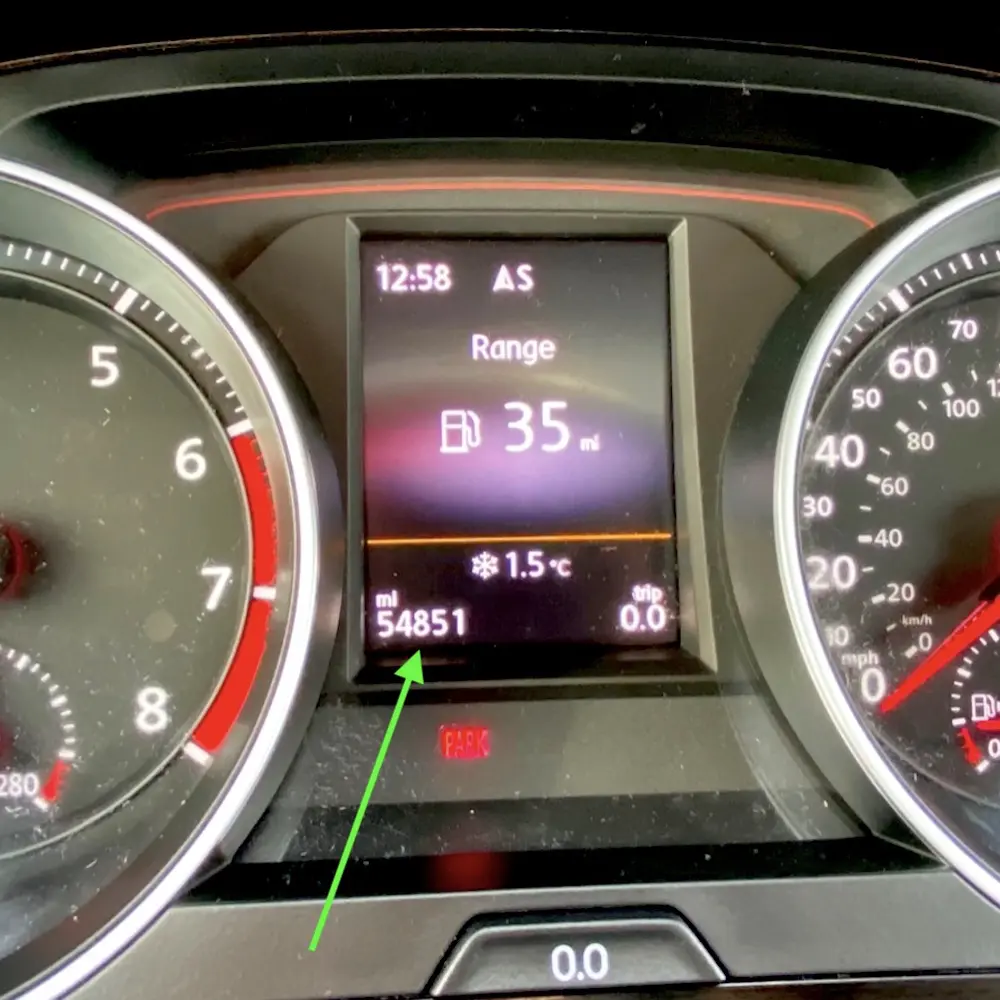When you sell or transfer a vehicle you shoud take an odometer reading because it’s a very important detail for both the seller and the buyer. Moreover the law requires the seller to write the exact odometer reading at the time of the vehicle’s transaction.
So as a seller you can complete the odometer reading statement on the vehicle’s Certificate of title and/or on a legal document called an Odometer Disclosure Statement (it depends on your state).
Please remember: the odometer reading is the number of miles on the vehicle and not on the engine, even if the engine is newer than the rest of the vehicle! So below you can learn how to correctly read the odometer. You can find also many odometer examples for the most popular cars in the US.
Usually if the vehicle’s mileage is displayed in kilometers, it must be converted to odometer miles. Use this ratio to do the kilometers to miles conversion: 1 kilometer = 0.621 miles.
What is an Odometer?
According to the dictionary an odometer is an instrument for measuring the distance traveled by a vehicle and the word odometer derives from ancient Greek hodós (meaning “path” or “gateway”) and métron (meaning “measure”).
An odometer may be mechanical, electronic, or a combination of the two. Nowadays almost all odometers are electronic.
Where can I find and read the Odometer?
The odometer is located on your vehicle’s dashboard, near the speedometer, and usually it is placed in a rectangle window.
How to read an Odometer?
You read the odometer’s displayed digits from left to right. If the speedometer is in mph then the odometer reading will be in miles. If the speedometer is is km/h then the odometer reading will be in kilometers.
If the odometer displays tenths, for example 40123.5 miles – you will exclude the tenths and you will read only 40123 miles.
When you write the miles you can have these situations:
- Actual Mileage Reading – it means that the odometer works fine and it recorded all the miles the vehicle has traveled;
- Not the Actual Mileage Reading (ODOMETER DISCREPANCY) – it means that the odometer statement was not filled out by the owner at the time of sale or, the odometer was replaced and reset at zero because of a repair or, the odometer stopped working and the vehicle was driven more than 30 days before repair or, the odometer numbers were turned back.
- In Excess of its Mechanical Limits – it means that the odometer showed 99,999 miles and turned to zero, instead of to 100,000 miles because only 6-digit odometers can record more than 100,000 miles. However now most vehicles have electronic odometers that can record 6-digit values.
However if you know that the odometer reading is in excess of its mechanical limits or is not the actual mileage you have the option to complete this information in the Odometer Disclosure Statement form.
Examples of popular cars dashboards with their odometer readings
Below you’ll find a few examples of odometer positions (marked by the green arrow) and readings of various dashboards found on most popular and sold vehicles in the United States:
2007 Toyota Camry LE Odometer Reading of 156990 miles:

2018 Ford F-150 Limited Odometer Reading of 25404 miles:

2013 Honda Accord EX-L Odometer Reading of 86478 miles:

2019 Honda Civic Sedan Sport CVT Odometer Reading of 35988 miles:

2018 Toyota Corolla L CVT Odometer Reading of 55289 miles:

2014 Nissan Altima Odometer Reading of 34183 miles:

2018 Ford Fusion Energi Odometer Reading of 44076 miles:

2017 Chevy Malibu Odometer Reading of 34539 miles:

2013 Hyundai Sonata GLS PZEV Odometer Reading of 45027 miles:

2016 Volkswagen Golf GTI SE Odometer Reading of 54851 miles:

Tesla Model 3 Odometer Reading of 10952 miles:

What is Odometer Fraud
According to the United States Department of Transportation “odometer fraud is the disconnection, resetting or alteration of a vehicle’s odometer with the intent to change the number of miles indicated. NHTSA estimates that more than 450,000 vehicles are sold each year with false odometer readings. This crime costs American car buyers more than $1 billion annually.”
Our advice is to check carefully a vehicle and its documents before you buy it especially in a private transaction. Keep in mind that if an offer it’s to good to be true then it is probably a scam, and you should be very careful!